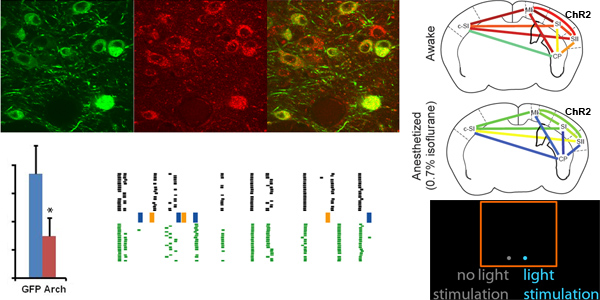Understanding normal and pathological brain computations

We are providing our brain mapping, control, and dynamical recording tools to the biology community, aiming to democratize the advanced analysis and repair of the brain and other biological systems. We also use these tools within our lab, to analyze how specific brain mechanisms (molecular, cellular, and circuit-level) give rise to behaviors and pathological states, or to the remedy thereof. One hope is to understand how the detailed molecular and circuit structures of brains give rise to brain circuit dynamics and signaling, which in turn yield complex emergent outputs such as behaviors; our work has touched upon topics including detailed patterns of synaptic activity, nonhuman primate cognition, emotional states, and decision making. These studies, often done in interdisciplinary collaborations, may yield fundamental insights into how best to go about treating brain disorders; our work has touched upon topics ranging from anesthesia to Alzheimer’s disease. To complement such studies, we develop accessory tools such as robots that can perform brain surgical techniques. We also seek to apply our toolsets to entire C. elegans and zebrafish brains, with the goal of understanding entire small brains and how their building blocks work together as an emergent whole. These neuroscience goals also motivate us to design and develop new tools, which we then deploy throughout the biology community. We also collaboratively apply our technologies to lots of other problems in biology and medicine, including in fields such as developmental biology, cancer, microbiology, virology, immunology, and aging.